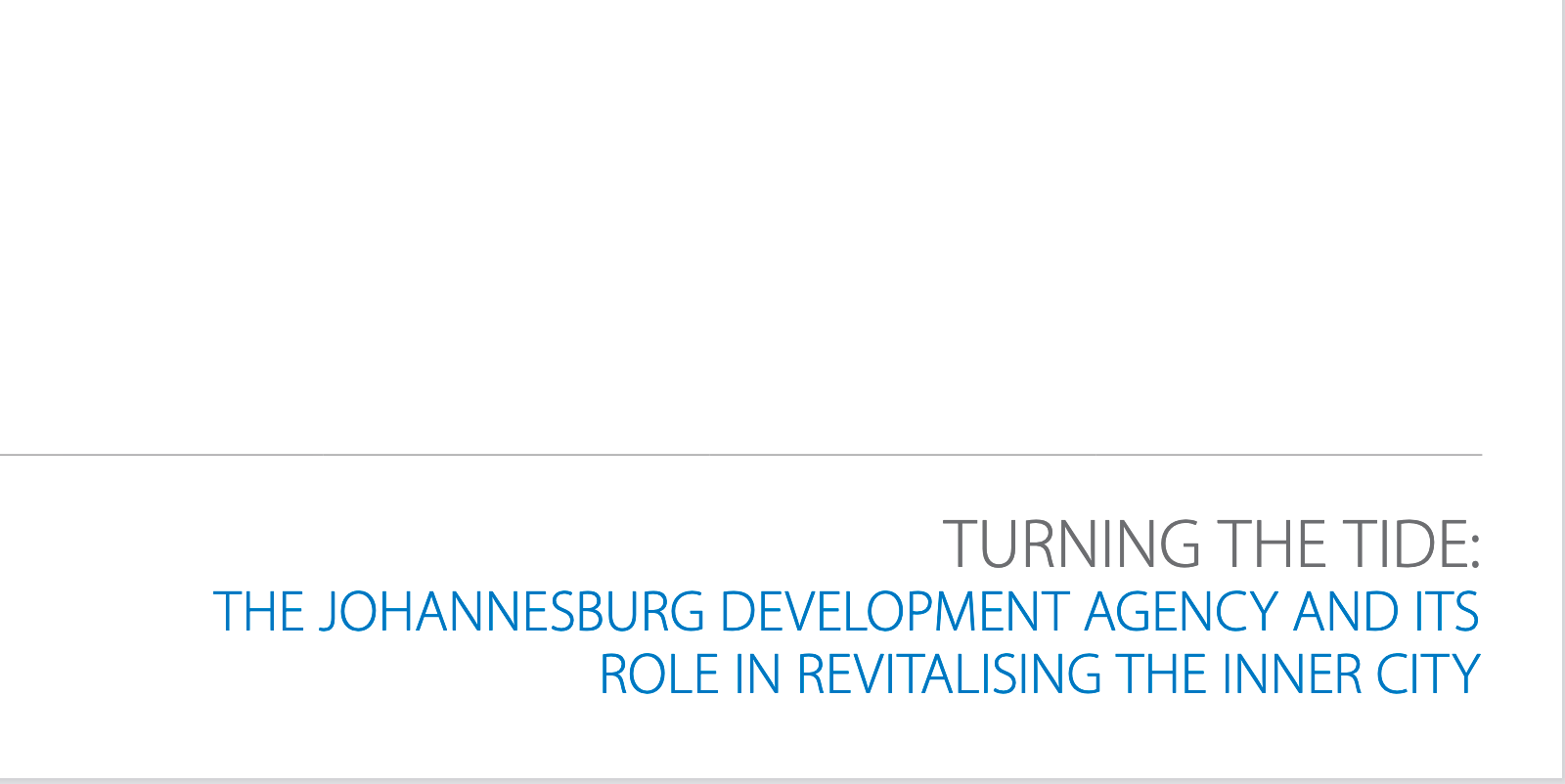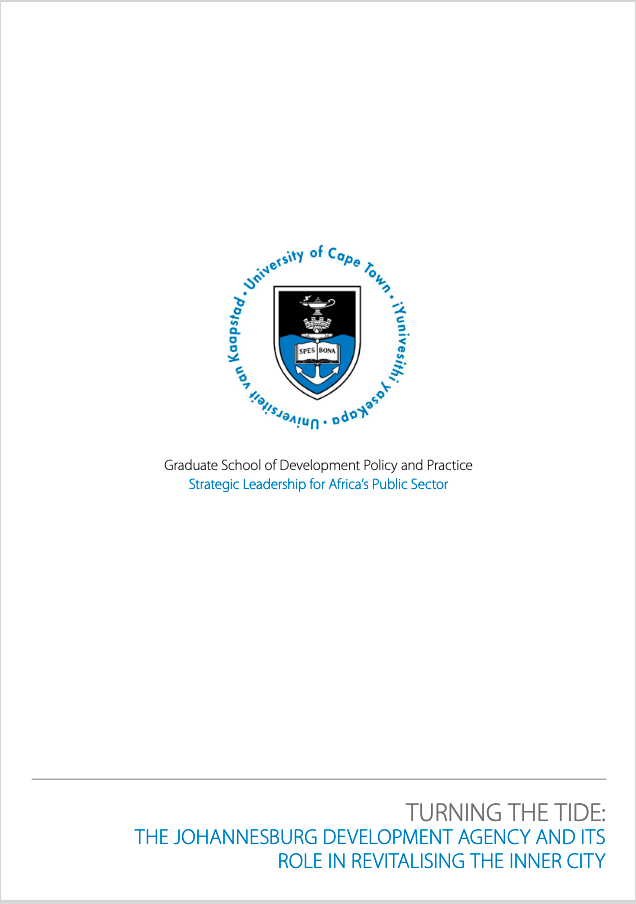By Tracy Ledger (van der Heijden), for the University of Cape Town’s Graduate School of Development Policy and Practice
Johannesburg started life as a mining village in 1886. Half a century later it was a fast-growing city, and by 1936 was considered important enough to host the Empire Exhibition. Its rapid expansion continued through the 1960s: The South African economy was booming and, given Johannesburg’s undisputed status as South Africa’s industrial and commercial capital, large investors poured money into developing the city. In the 1960s and 1970s the central business district (CBD) was almost completely rebuilt, with the new 50-floor Carlton Centre becoming the tallest building in Africa.



